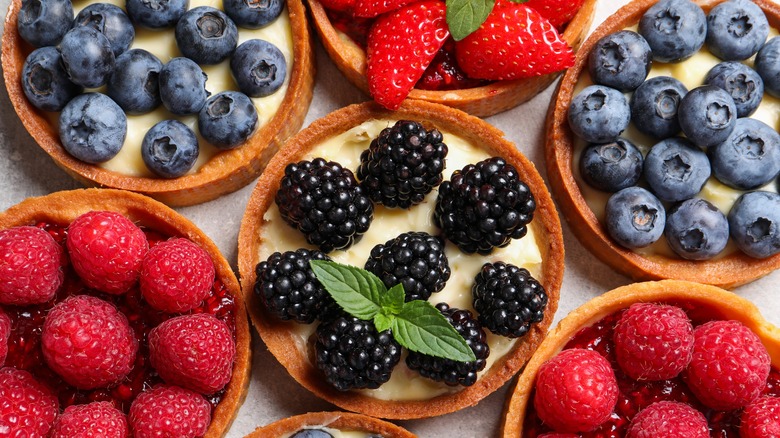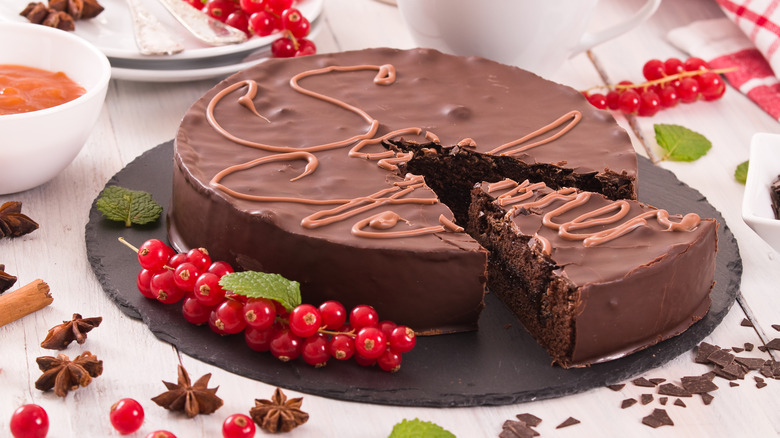The Difference Between Tortes And Tarts
It's sometimes difficult to tell the difference between a torte and a tart. The similarities between the two names definitely adds to the challenge. The featured ingredients can also overlap as well. Fruits, such as fresh berries, are often featured in these desserts. They can both be found in savory as well as sweet applications, and yet a vegetable tart is way more common than a vegetable torte. (You can check out this delicious tomato tart if you want to see for yourself.)
Still, there are usually some structural distinctions that will make it easier to tell a torte from a tart apart. One of the most important features is the base of each dessert. The bottoms and sides of a tart are usually formed with a pastry dough. This crust holds a filling and then other toppings, such as fruit, are placed over the filling. Tortes, on the other hand, typically start off with a cake layer. Then fillings are put on top of the cake layer, and then another cake layer is placed on top of that. These are only general rules for these delicious treats, however. Several variations of these desserts defy the usual guidelines — and sometimes the distinction is more about how people perceive them than about exactly how they are structured.
What's a torte?
Take a quick look at most tortes, and you'll see that they often look like cakes. Some of the ingredients, however, can help them stand apart from traditional cakes. Tortes are often made with nut flour or breadcrumbs in place of wheat flour. They often feature more eggs than a standard cake, too, which results in a richer, denser dessert. Whipped cream and fruit often serve as the filling instead of frosting.
In the world of tortes, there are some special ones that may be familiar to avid dessert lovers. The Sacher torte originated in Vienna, and it actually looks more like a cake than a tart. It consists of layers of chocolate cake with a fruit jam filling, and it's usually covered in a chocolate glaze. Another famous torte, the Linzer torte, however, likes to break all the traditional torte rules. Look at some recipes for this dessert, and it's easy to see some very tart-like elements. It's not layered like a standard torte, and it features a pastry crust with a fruit filling. That pastry crust, however, features almonds, which are a common torte ingredient.
What's a tart?
Check any dictionary for the word "tart," and most definitions compare it to a pie, highlighting the use of a pastry crust. There are some differences between pies and tarts, though. Tarts usually don't have pastry tops and they often have a layer of custard or chocolate ganache on the bottom in addition to fruit. The crust for a tart is more delicate than one for a pie. It's this crust that also helps distinguish a tart from a torte.
The pan used to bake the tart also sets it apart from a torte. Most tart pans have fluted sides and a removable disk in the bottom that allows for the tart to be removed from the pan easily. Still, there are many desserts that are called tortes, but actually look more like tarts. As with the Linzer torte, a Bavarian apple torte has more in common with a tart than a traditional torte. It has a crust, filling, and a topping made of fruit. There are no layers with this treat like a torte, either. But whether you call it a torte or a tart, it's still a delicious dessert to end any meal.


